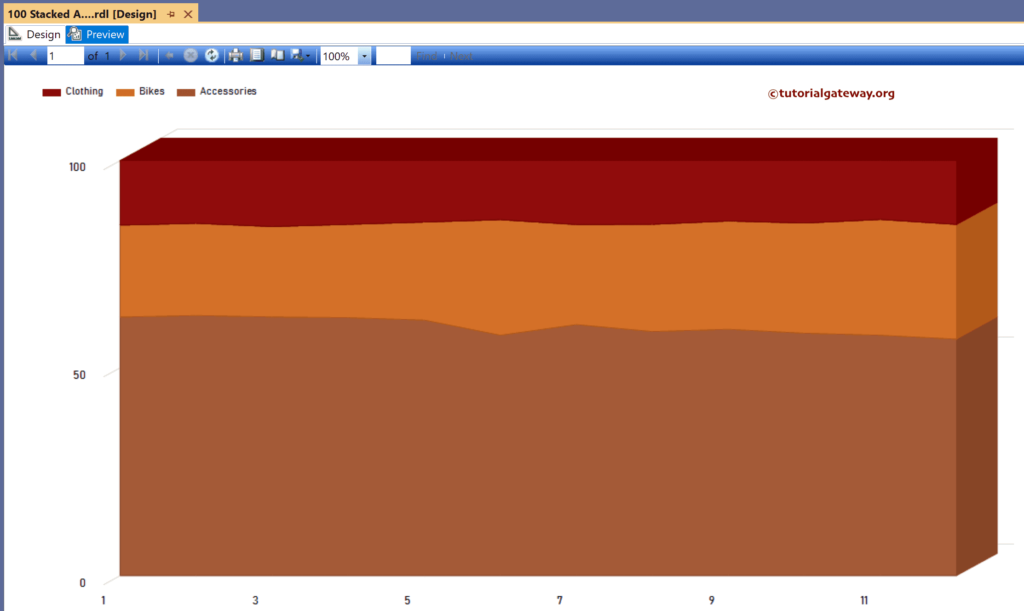This SSRS article shows how to create a normal and a 3D 100% Stacked Area Chart, format fonts and colors with an example. To demonstrate this example, right-click on the Datasets folder to create a new DataSet.
The below screenshot shows the data set that we use for this example.
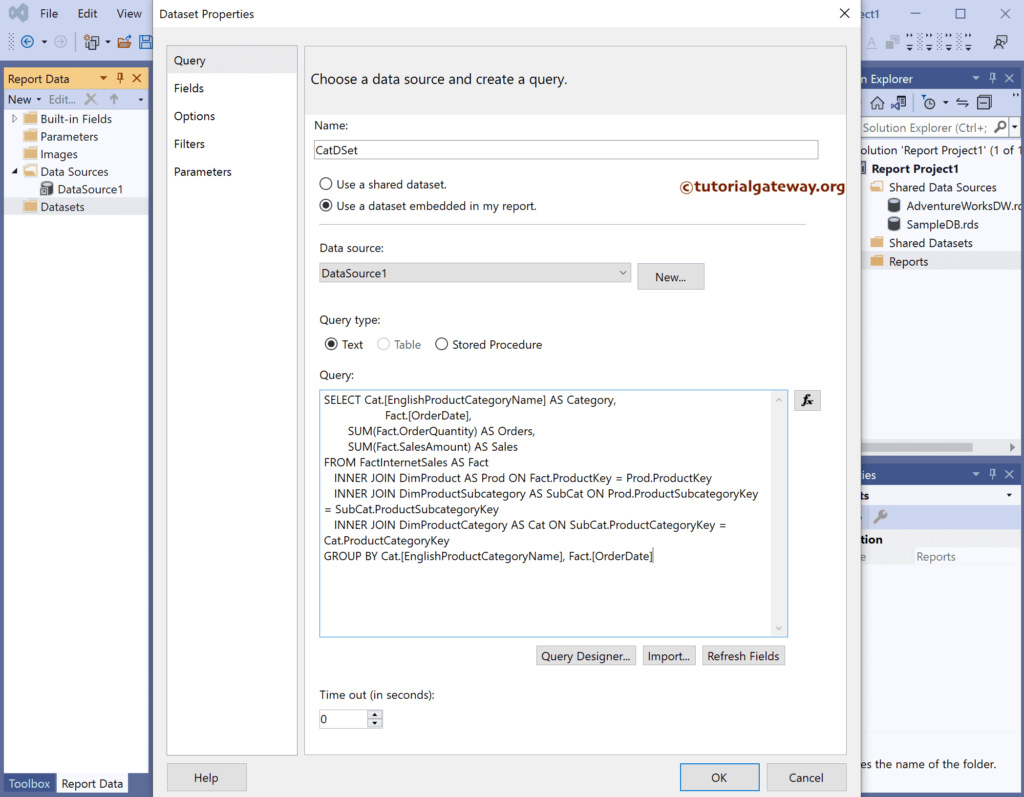
The Sql query that we used above SSRS example is:
SELECT Cat.[EnglishProductCategoryName] AS Category,
Fact.[OrderDate],
SUM(Fact.TotalProductCost) AS ProductCost,
SUM(Fact.SalesAmount) AS Sales
FROM FactInternetSales AS Fact
INNER JOIN DimProduct AS Prod ON Fact.ProductKey = Prod.ProductKey
INNER JOIN DimProductSubcategory AS SubCat ON Prod.ProductSubcategoryKey = SubCat.ProductSubcategoryKey
INNER JOIN DimProductCategory AS Cat ON
SubCat.ProductCategoryKey = Cat.ProductCategoryKey
GROUP BY Cat.[EnglishProductCategoryName], Fact.[OrderDate]
Next, double-click the newly created DataSet and click the add calculated field option under the fields tab. Assign Month as the column name and click ƒx button to write the below expression that extracts the Month from Order Date.
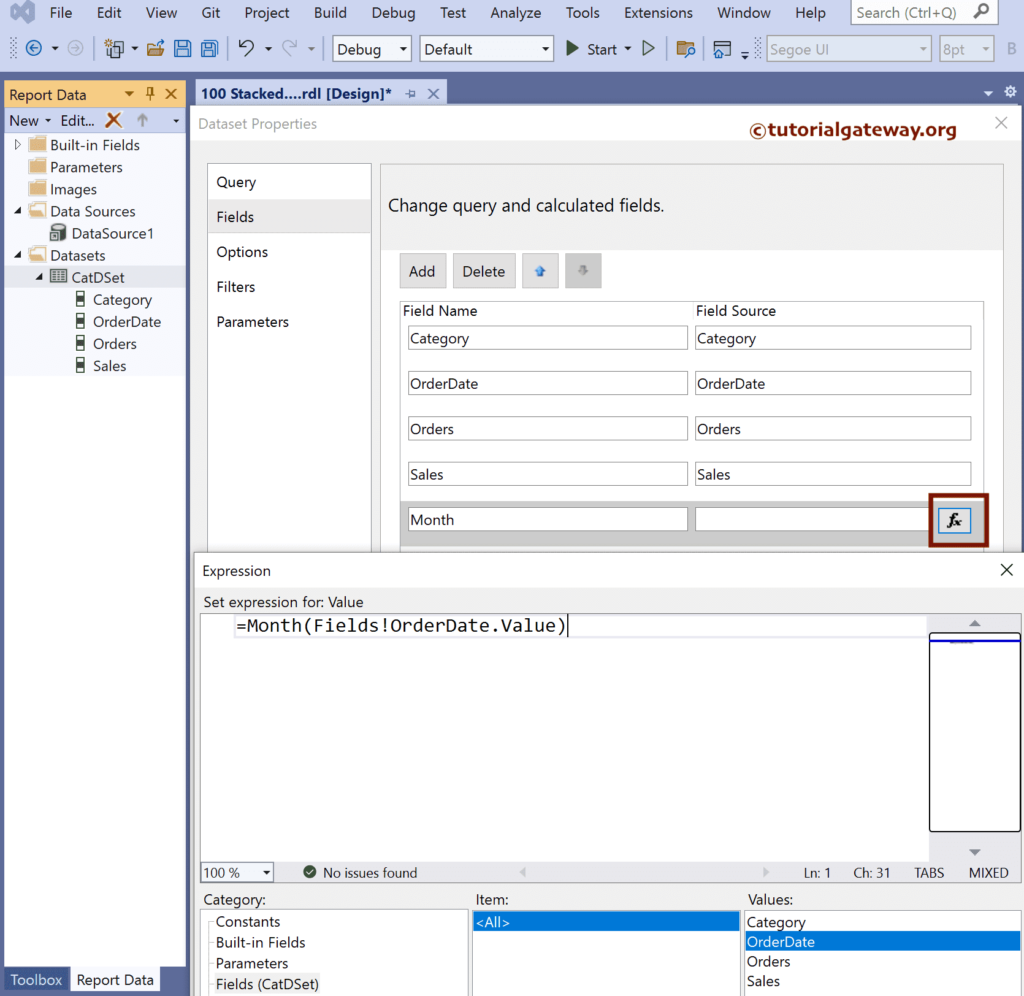
SSRS 100% Stacked Area Chart
To add a 100% Stacked Area Chart, right-click the report area, choose Insert, and then the chart option from the context menu. Otherwise, drag and drop the chart from the toolbox to the report area.
Select the 100% Stacked Area Chart from the window and click OK to add to the report area.
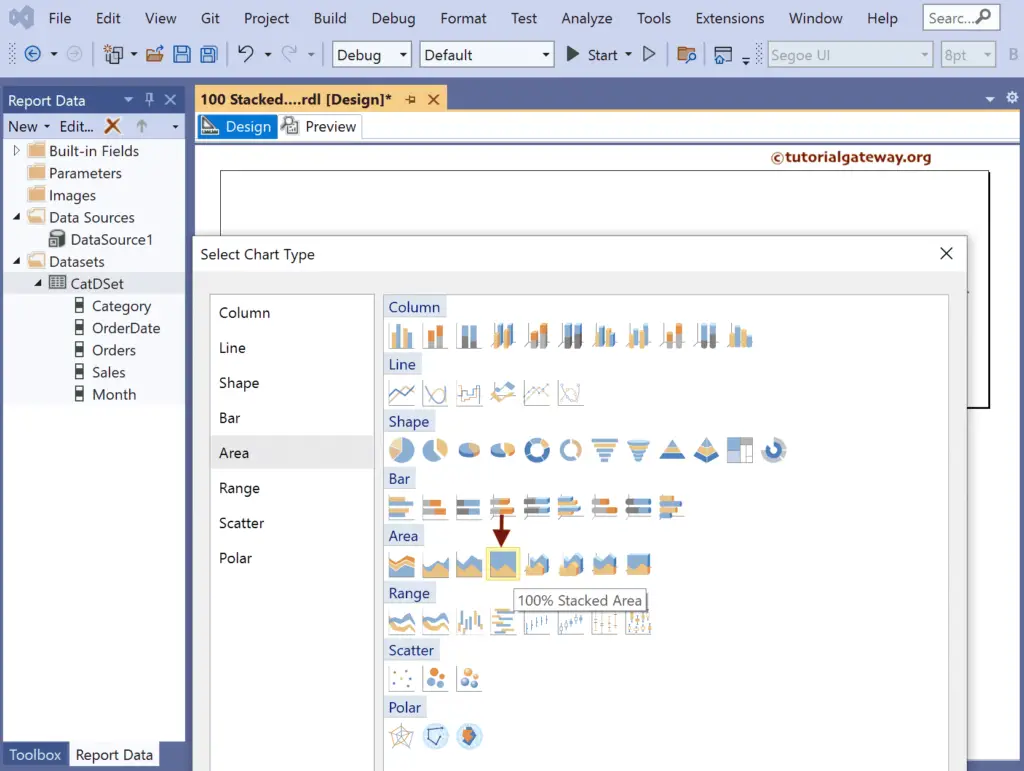
Use Plus button or drag the fields to the Values, Category Groups, and Series Groups sections.
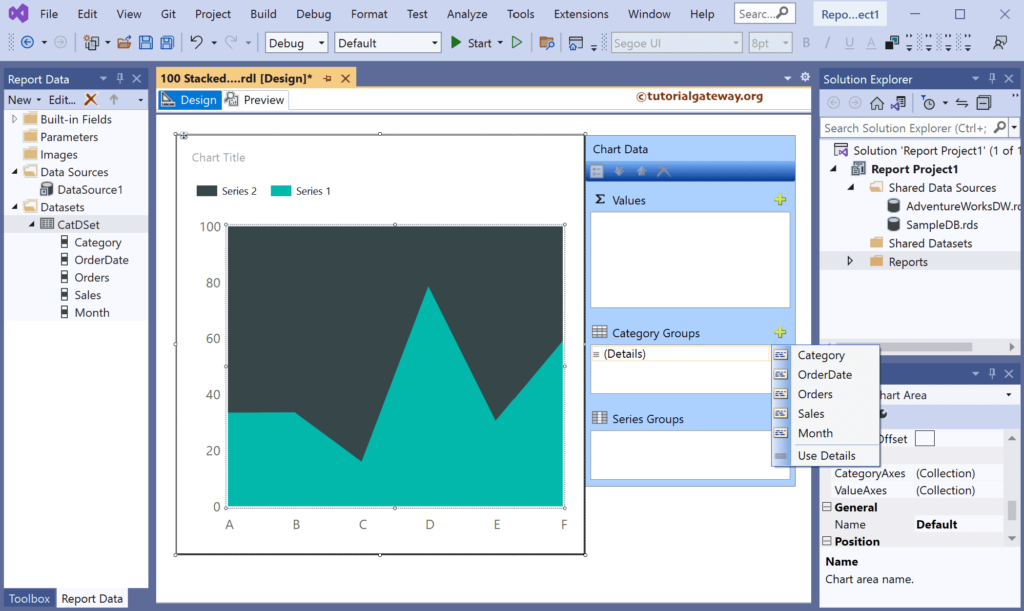
Here, we added the Orders column to Values, Month to Category Groups, and Category field to the Series Groups section.
Use the toolbar or the properties window to format the 100% stacked area chart font, color, and size of the X-axis, Y-axis, data labels, and legend.
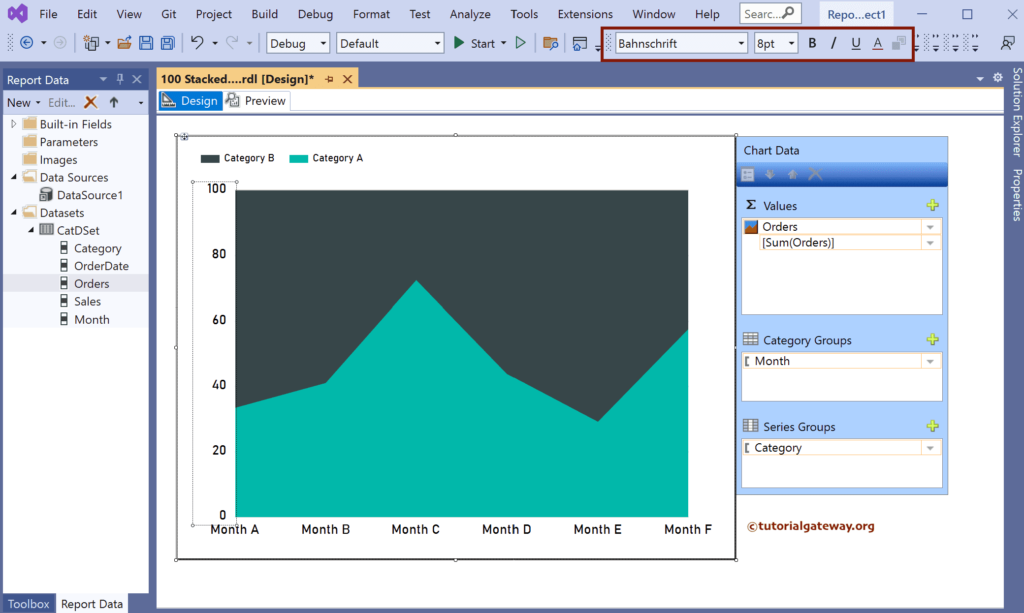
Click the preview button to see the chart.
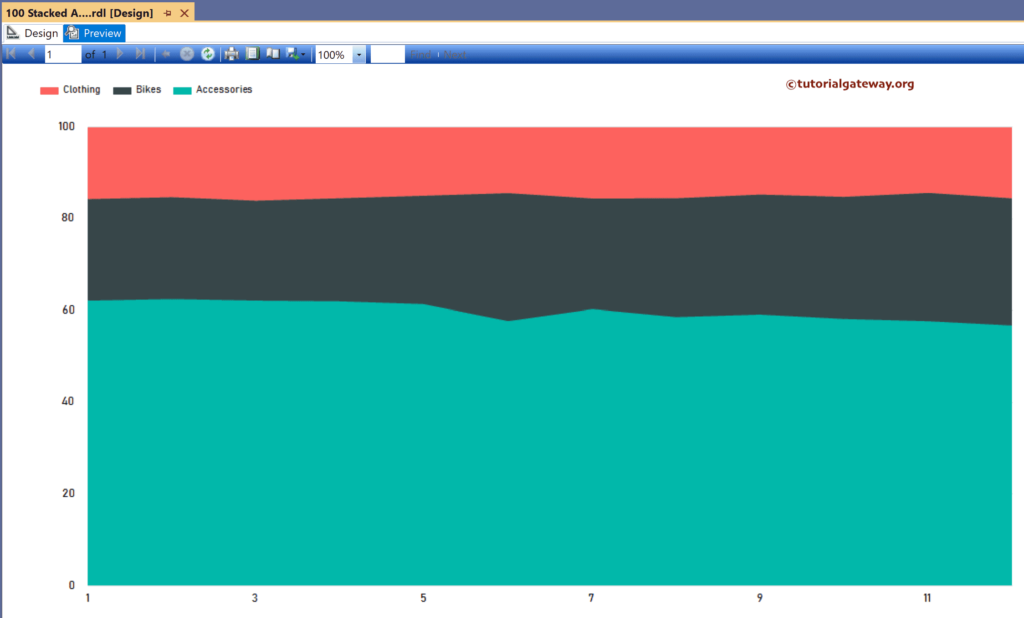
SSRS 3D 100% Stacked Area Chart
Right-click on the chart and choose the Change Chart Type option. Next, select the 3-D 100% Stacked Area Chart from the window. Next, change the palette to Chocolate.
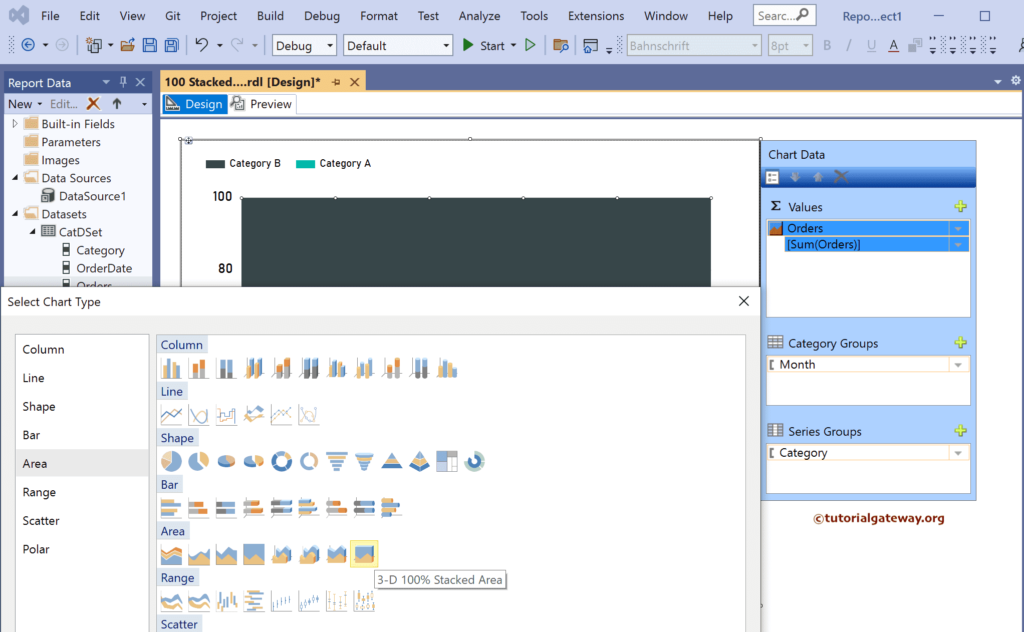
Preview the report.
